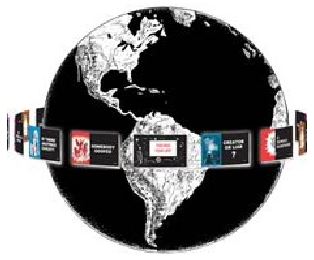Book by Cahill a Must for Serious Soulwinners
"Ten out of ten people die. Where we go when we die, and who will be there with us, is something we all should think about," says author Mark Cahill in his new book, One Heartbeat Away.
Cahill's first book, One Thing You Can't Do In Heaven, was written to instruct and inspire the believer. His new book is written to the unbeliever.
In Cahill's career of witnessing everywhere he can and teaching others to witness, he has developed certain basic themes that draw the unbeliever into conversation and lay the groundwork for presenting the Gospel.
Cahill discovered that a person's view of where the universe came from colors every other part of his worldview. So, in the first chapters of One Heartbeat Away, he presents compelling arguments against evolution and the overwhelming evidence of a Creator.
Next he explores the various gods that people worship and the books that people use to know about these gods. He shows that all of these are seriously inferior to the Bible and its description of a loving Creator.
The certainty of eternity, and its two destinations, the requirements of the law, the ten commandments, and our universal guilt before God is covered extensively in the following section of the book. By now, the reader is painfully aware of his precarious position as an unbeliever.
Cahill then takes over 30 pages to show that the Gospel is the only sure good news in all the world's religions. Following chapters explain that repentance is necessary and a decision between Jesus and the devil is required.
The final chapters deal with who we are as new creatures in Christ; that our primary purpose is to share the good news with others and live the joy, love and generosity of the Christ that now dwells within.
Cahill's first book, One Thing You Can't Do In Heaven, has sold over 100,000 copies and is being translated into several languages. It is laced with stories from his own witnessing experience and techniques of sharing the Gospel. For the serious soulwinner, it is must reading.
Cahill's new book, One Heartbeat Away, is a fitting companion to his first one, giving the soulwinner a through briefing on the central issues concerning the unbeliever's perspective. However, it is primarily designed to carefully walk an unbelieving reader through his struggles toward a decision to trust his eternal life to Christ. It also contains many personal stories from Cahill's own witnessing told in a way to captivate the reader's attention.
Both books are essential tools for the serious soulwinner.
- See more articles on related topics:
- Evangelism
Other Articles from January/February 2006:
- Military Chaplains Pressured Not to 'Proselytize'
- Spacecraft Finds More Evidence Debunking Evolution
- Danger of Hate Speech Laws Becoming Apparent
- A Message From Jack Chick
- Chick Mail Bag Jan-2006
- Millions Deceived by Crying Statues
and a 'Lady of Light'
- Prison Ministry Letters: Jan-2006
- Anything but THAT one!
- Christians One Step Closer to Being Called Sick
- Swahili ONE WAY! Tract Boosts Youth
Outreach in Tanzania
- Tract Passing Tips - Jan-2006
More on Evangelism:
Products of Interest:
-

One Heartbeat Away
254 pages
You died. Now what? Is there anything out there after we take that last breath? -

One Thing You Can't Do In Heaven
223 pages
What are you doing of significance today that will matter three-hundred-million years from now? You certainly cannot win a soul in heaven. Inspiration and ideas for witnessing.



